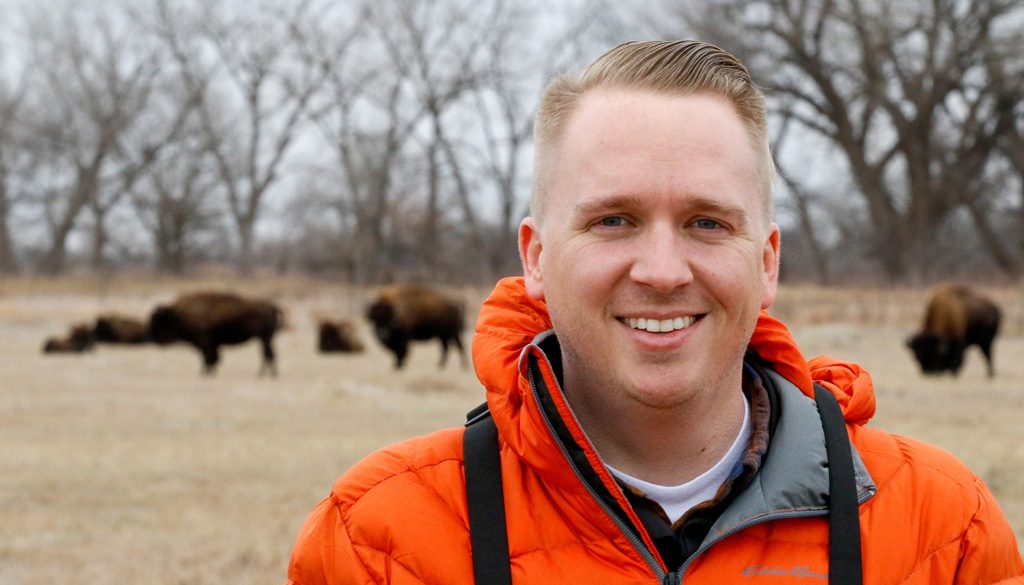
WHAT: University of Nebraska at Kearney Science Café
HOSTED BY: Sigma Xi The Scientific Research Society
TITLE: “The American Bison: Being Buffaloed”
TIME: 5:30 p.m.
DATE: Monday, Feb. 20
PLACE: The Loft, Cunningham’s Journal, 15 W. 23rd St., Kearney
SPEAKER: Dustin H. Ranglack, UNK assistant professor of wildlife biology
BIO: Ranglack came to UNK in 2016 and is establishing a research program focused around bison ecology and the impacts of habitat fragmentation on wildlife movements. He completed a post-doctoral research position at Montana State University, studying habitat selection of cow elk in Montana. Ranglack’s research includes studying bison ecology and bison-cattle interactions in the Henry Mountains of Southern Utah. The Henry Mountains bison herd is the only free-ranging, disease-free, genetically-pure, huntable bison population in the world, but they frequently come into conflict with local ranchers concerned that bison are strong competitors with their cattle.
ABSTRACT: American bison are considered to be the first conservation success story. Once numbering in the millions, the entire plains bison species declined to less than 100 in the wild. Through numerous conservation efforts, bison have rebounded to an estimated 500,000. However, only 30,000 of those bison are in conservation herds, with the remainder in livestock production herds, and most of the conservation herds are small, intensively managed, and maintained behind fences.
Because of this it has been suggested that despite the numerical recovery, bison are ecologically extinct. The conservation community is now working towards a second restoration of bison, one that might ultimately see large, free-roaming herds on multiple large landscapes across the historic range. However, there is real concern from ranchers over disease transmission and potential competition. This presentation will examine these issues and present a potential solution that will allow for free-roaming bison without negatively impacting local communities and perhaps even enhance them.
CONTACT: Allen A. Thomas, assistant professor of chemistry, 308.865.8452, thomasaa@unk.edu
-30-